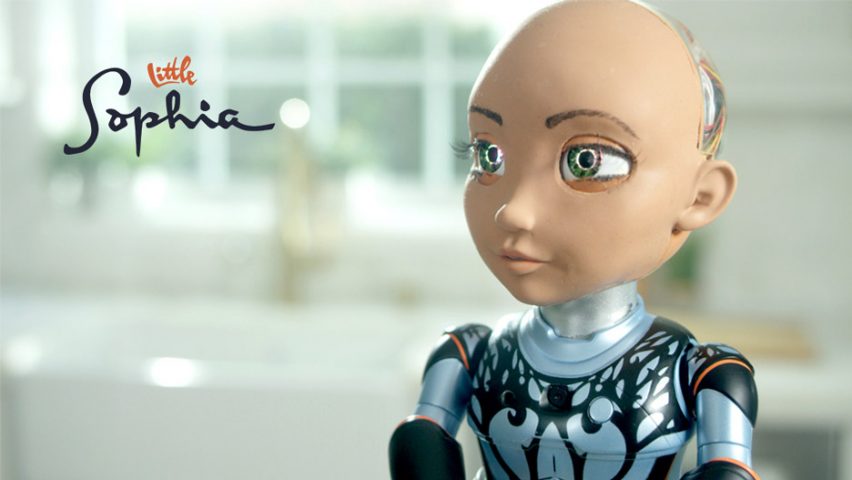
Hanson Robotics' Little Sophia is a coding companion for young girls
Hanson Robotics has created a "little sister" version of AI robot Sophia, intended to help young girls learn to code and gain an understanding of STEM subjects.
Little Sophia is a 14-inch tall AI robot with humanoid features and a skin-like surface that covers the robotics in her head. She will be the first commercial robot with a face that resembles a human.
Created by Hanson Robotics founder David Hanson, she is made to function as a learning companion for children aged seven to 13 years old, especially girls, to learn STEM subjects – science, technology engineering, mathematics.
"We believe that Little Sophia can help to introduce STEM, coding and AI to children – especially girls – in a fun, safe, inspiring and interactive way that might help to make a small difference in reversing current trends," explained the brand.
View this post on Instagram
Launched on Kickstarter last week, Little Sophia, much like the original Sophia robot, is based on a foundation of three humanistic traits – creativity, empathy and compassion.
Little Sophia only consumer robot with human-like face
She has a wide range of facial expressions, as well as inbuilt facial tracking and recognition technology, to make her appear as human as possible.
"Little Sophia has the same endearing personality as Sophia the Robot. She is intensely curious, refreshingly innocent, and uniquely playful," said the Hanson Robotics.
"She is the only consumer robot with a human-like face who can generate a wide range of human facial expressions. She not only responds to commands but also actively engages in conversations."
Robot designed to "encourage future scientists"
Using Little Sophia's in-built software and included children-friendly tutorials through Hanson's AI Academy, users can learn through a series of stories, jokes, songs and games.
"One of our goals at Hanson Robotics is to support and encourage the future scientists, developers, engineers and roboticists that will shape our world tomorrow," said the brand.
Children can also learn to program Sophia using Blockly and Python languages via a phone app.
"A lack of women in STEM fields"
Hanson Robotics hopes that Little Sophia will encourage more girls to learn STEM-based subjects that will lead to roles in fields that are currently male-dominated.
"Women make up only 15 to 25 per cent of the current STEM workforce and the gap is broadening," said Hanson Robotics.
"The growth of STEM jobs in the future is expected to skyrocket. However, there's a lack of women in these fields meaning fewer female role models, both for current STEM employees and for girls still forming career choices," continued the brand.
"There's no evidence that girls are less capable in these fields, but rather that they often feel less capable, partly due to stereotyping."
Robots are increasingly infiltrating our everyday lives. Norway's installation at the London Design Biennale last year featured a telepresence robot, which keeps children in touch with the classroom if they're off school with long-term illness.
German automotive company Continental has also announced plans to use a system of autonomous vans packed with dog-like four-legged robots to deliver packages.